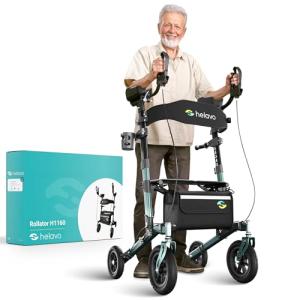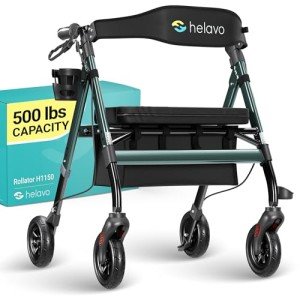9 Things Your Parents Taught You About Medical-Grade Walker
페이지 정보

본문

Understanding Medical-Grade Walkers: A Comprehensive Guide
Medical-grade walkers are important mobility aids created for individuals who need assistance in Walking Aid With Seat due to injury, surgery, or age-related concerns. Unlike standard walkers, medical-grade walkers are made with higher quality products and advanced features that accommodate the particular needs of patients and healthcare suppliers. This article will check out the various types of medical-grade walkers, their advantages, features, and crucial factors to consider when selecting one. We will also resolve some regularly asked questions to help readers make well-informed decisions.
Types of Medical-Grade Walkers
When it comes to mobility aids, understanding the various kinds of walkers readily available can help users discover the best fit for their needs. Here are the most typical kinds of medical-grade walkers:

| Type of Walker | Description | Ideal For |
|---|---|---|
| Standard Walker | Typically made from aluminum and including four legs, basic walkers offer strong support however need lifting to move forward. | Users with strength in their arms |
| Two-Wheeled Walker | Comparable to standard walkers, however with two wheels on the front legs, permitting easy motion without requiring overall lifting. | Users who have some mobility abilities |
| Four-Wheeled Walker | Incorporating four wheels, these walkers frequently feature a seat and handbrakes, making them easy to maneuver over longer ranges. | Users who might need to rest regularly |
| Rollator Walker | A type of four-wheeled walker designed for indoor and outdoor use, featuring a seat and storage bag for convenience. | Active users who need to manage fatigue |
| Knees Walker | Developed for individuals with injuries to the lower extremities, this walker uses a padded platform for resting the knee while moving forward. | Users recovering from foot or ankle surgical treatment |
Secret Features of Medical-Grade Walkers
Medical-grade walkers are developed with numerous features that boost usability, safety, and user comfort. When selecting a walker, it's important to try to find the following:
1. Adjustable Height
- Customizing walker height is crucial for user comfort and safety. Walkers ought to offer numerous height settings to fit individual needs.
2. Weight Capacity
- Constantly check the weight limitation of a Senior Walker. Medical-grade walkers normally support a greater weight capacity than standard walkers, ensuring resilience and stability.
3. Brake System
- For those thinking about four-wheeled walkers or rollators, a responsive brake system is essential. It enables safety when stopping or resting and avoids unwanted motion.
4. Storage Options
- Numerous medical-grade walkers come with connected baskets or bags for bring personal products, improving functionality for users who may want to keep their hands free.
5. Mobility Accessories
- Some walkers can be equipped with additional devices such as cup holders, trays, and walking sticks to boost mobility and benefit.
6. Portability
- Lightweight styles and easy folding systems permit convenient transportation and storage, making it simpler for users to take a trip or go to health care facilities.
Advantages of Medical-Grade Walkers
Medical-grade walkers supply numerous benefits to users, supporting their mobility, security, and total quality of life. Here are some essential benefits:
Enhanced Safety
- The added support from a medical-grade walker supplies stability, minimizing the danger of falls, particularly for elderly users or those recuperating from surgical treatment.
Increased Independence
- People utilizing walkers can traverse their environment with more confidence, permitting them to engage separately in everyday activities.
Post-Surgical Recovery Support
- Medical-grade walkers are invaluable in rehab settings, as they help patients in restoring mobility without jeopardizing security.
Improved Comfort
- Features such as padded grips and adjustable heights guarantee that users can stroll easily and without stress on their joints.
Social Engagement
- With improved mobility, people can take part in social activities, cultivating psychological well-being and decreasing feelings of seclusion.
Selecting the Right Medical-Grade Walker
When choosing a medical-grade walker, a number of factors to consider can help guarantee that the most suitable model is chosen:
Individual Health Needs: Consulting with a health care expert can help figure out the very best kind of walker based on the person's medical condition.
Environment: Consider where the walker will be utilized most often (i.e., inside vs. outdoors). This will affect the choice between a standard Comfortable Walker and a Reliable Rollator Walker.
Budget: Prices for medical-grade walkers can vary commonly. It's important to evaluate features versus budget plan restrictions to find an ideal choice without compromising quality.
Caretaker Input: Input from caretakers or relative can also be valuable when assessing the usability and handling of the walker.
Frequently Asked Questions About Medical-Grade Walkers
Q1: How do I understand if a medical-grade walker is the best option for me?
A1: It's best to seek advice from a health care provider who can examine your specific requirements and recommend a walker that fits your condition.
Q2: Can I customize the walker?
A2: Many medical-grade walkers provide adjustable elements, such as height and seat choices, while others might support extra devices.
Q3: How do I correctly preserve my walker?
A3: Regularly look for any loose parts, clean any dirt build-up, and ensure that the wheels and brakes are working effectively for safety.
Q4: Is it safe to use a walker on stairs?
A4: Generally, using a walker on stairs is not encouraged. It's important to seek assistance and participate in more secure options when navigating stairs.
Q5: Can medical-grade walkers be covered by insurance coverage?
A5: Many insurance coverage strategies provide some protection for medical-grade walkers. Contact your provider about your particular policy and eligibility.
Medical-grade walkers are transformative mobility help that promote self-reliance and security for people with physical obstacles. By comprehending the different kinds of walkers readily available, their features, benefits, and how to select the best one, users can be much better geared up to make educated decisions about their mobility needs. As always, assessment with a health care expert is important in discovering a Innovative Walker Design that takes full advantage of security and comfort. Whether for recovery or continuous mobility support, the best walker can considerably enhance one's quality of life.
- 이전글✪당장룰라.com✪킹카지노롤솔랭배팅부자벳비비비카지노 25.09.08
- 다음글10-Pinterest Accounts You Should Follow About Buy Fake Money Bitcoin 25.09.08
댓글목록
등록된 댓글이 없습니다.